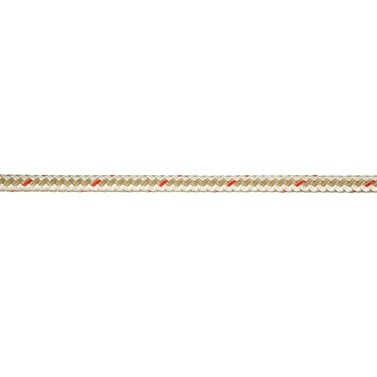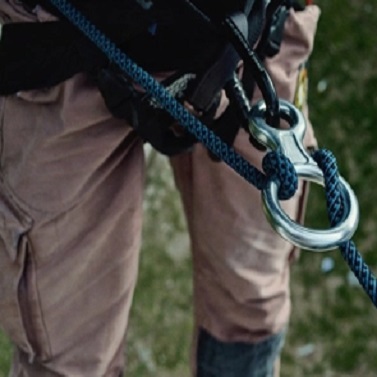Ropes are essential tools in many industries—from tree work and construction to rodeo and rescue. But not all ropes are created equal. Two common types—bull ropes and rigging ropes—serve different purposes, and knowing the difference can save time, money, and even lives.
In this article, we'll break down the key distinctions between bull ropes and rigging ropes, explore their uses, and even touch on how a racing rope fits into the broader world of rope applications.
A bull rope is most commonly known for its use in rodeo sports, especially bull riding. It’s the rope that riders grip to stay on the bull.
But in the tree care and logging industries, a bull rope is also a slang term for a heavy-duty polyester or nylon rope used in pulling, lowering, or lifting large tree sections or logs. This dual usage often confuses people, so it’s important to distinguish context.
Thicker diameter: Typically 5/8" to 3/4"
High tensile strength
Polyester or nylon material
Often used with friction devices or winches
Designed to withstand shock loads during tree felling or rigging
In short, bull ropes are all about strength, durability, and control—often dealing with dynamic loads and heavy objects.
Rigging ropes are designed specifically for use in rigging systems—a combination of ropes, pulleys, carabiners, blocks, and other hardware that safely raise, lower, or suspend loads.
In arboriculture, rigging ropes are used to:
Lower cut limbs from trees
Stabilize moving loads
Handle static or semi-static loads
Made from high-strength synthetic fibers (e.g., polyester, nylon, or HMPE)
May be braided or double-braided
Prioritizes abrasion resistance
Designed for controlled lowering (not dynamic shock)
Unlike a bull rope used for pulling, rigging ropes are usually optimized for load control and smooth handling in systems.
| Feature | Bull Rope | Rigging Rope |
Purpose | Pulling/lifting heavy loads | Controlled lowering or suspension |
Strength | High tensile, handles shock loads | High strength, abrasion-resistant |
Material | Polyester or nylon | Polyester, nylon, or HMPE |
Diameter | Usually thicker | Can vary by rigging system |
Use Case | Tree pulling, winch systems, rodeo | Arborist rigging, load control |
While both ropes can handle heavy-duty tasks, their applications and designs are fundamentally different.
At first, a racing rope might sound unrelated—but it actually showcases how specialized ropes can become depending on the application.
A racing rope refers to ultra-light, high-speed ropes used in competitive jump rope sports like speed skipping and CrossFit. These ropes prioritize:
Speed
Minimal resistance
Precision control
Just like a rigging rope or bull rope is engineered for its specific environment, the racing rope is designed for a completely different performance context—where rotations per minute (RPM) matter more than load-bearing capacity.
It’s a great reminder that rope technology is diverse and highly tailored.
Here’s a quick cheat sheet:
You're pulling or lowering large tree trunks
Working with winch systems
You need a rope that can absorb dynamic shock
You’re involved in rodeo events
You need precise control over a descending load
You're working in aerial tree removal
You're setting up complex pulley systems
You’re focused on load distribution and safety
While both bull ropes and rigging ropes are rugged, high-strength tools, their use cases couldn’t be more different. Understanding their unique roles—from bull riding arenas to 100-foot-tall trees—can help you choose the right tool for the job.
And while a racing rope might belong to a different world, it shares the same principle: the right rope, for the right purpose, makes all the difference.


